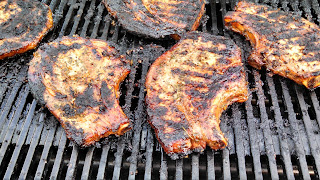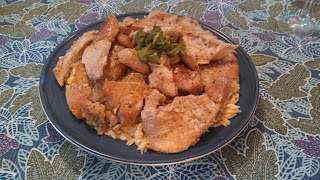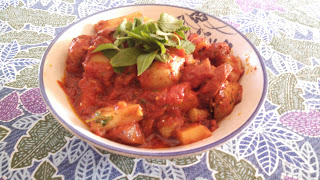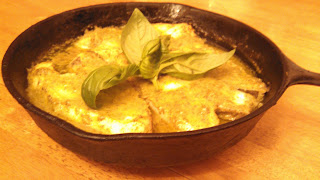Summer is archetypical salad time. But in my culture we never actually considered salads as a main dish. Back on the block, when I was growing up, salad was the side dish, not even the first course. This is common to Puerto Rican cuisine. We would never dream up such a thing as a huge chef’s salad. The idea of salad as a main course never entered out vocabulary until we reached the mainland. Back in the island of Puerto Rico a salad was considered nothing more than a simple amassing of greens served along with the main course. The arrangement was simple: lettuce and tomatoes slices drizzled with olive oil and vinegar. Party salads and such were the province of San Juan debutante society. Today, of course after three generations of Americanization, our salad repertoire is as vast and various as anyone’s.
Thus in this vein, in my family we’re always experimenting. We’ve come up with salad dishes that to some may seem more like vegetable dishes, for example using broccoli and artichokes as a main ingredient. The following recipe is within that category: an asparagus salad. I’ve always like asparagus, even as a kid. The salad given has a definitive classical influence. It consists simple of a vinaigrette spooned over the asparagus. The salad calls for raw onion rings (which in my family we love). If you don’t like eating raw onions, then soak the slices in a bowl of cold water for 10 minutes, drain, pat dry, and then serve with the salad. Add some crusty bread, a light red or white wine, and you’ve got a fabulous summer meal.
ASPARAGUS SALAD
1 pound fresh thin asparagus
Juice of 1 lemon
2 tablespoons olive oil
1 tablespoon Dijon-style or whole grain mustard
2 medium tomatoes, cut into half-moon shapes
1 small or 1/2 medium red onion, thinly sliced
1 hard boil egg, sliced into half-moon shapes
2 ounces fresh shaved Parmesan or Romano cheese
1. Bring a large pot of water to a boil over high heat.
2. Meanwhile, using sharp knife, trim and discard any tough asparagus stem ends.
3. Place the asparagus in the boiling water and cook for 3-4 minutes or just until the vegetable is bright green and tender but not soft.
4. Drain and transfer to a serving plate or platter.
5. Whisk together the lemon juice, oil and mustard in a salad cruet or measuring cup. Blend well to form a vinaigrette.
6. Arrange the tomatoes around the asparagus. Top with the onion and cheese. Spoon the vinaigrette over the vegetables.
7. Garnish with the egg slices and serve at room temperature.
Yield: 2-3 servings.









